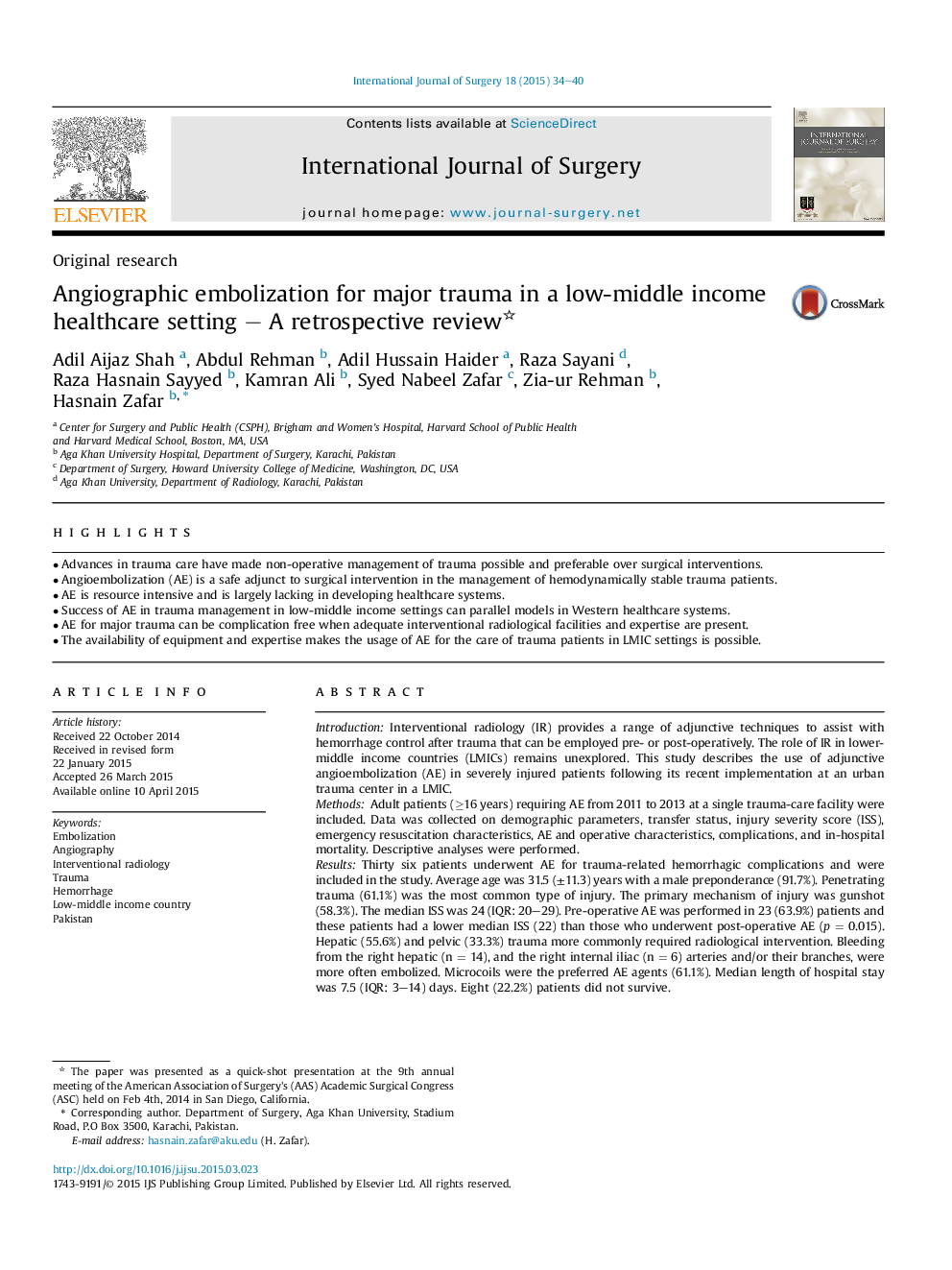| Article ID | Journal | Published Year | Pages | File Type |
|---|---|---|---|---|
| 4285823 | International Journal of Surgery | 2015 | 7 Pages |
•Advances in trauma care have made non-operative management of trauma possible and preferable over surgical interventions.•Angioembolization (AE) is a safe adjunct to surgical intervention in the management of hemodynamically stable trauma patients.•AE is resource intensive and is largely lacking in developing healthcare systems.•Success of AE in trauma management in low-middle income settings can parallel models in Western healthcare systems.•AE for major trauma can be complication free when adequate interventional radiological facilities and expertise are present.•The availability of equipment and expertise makes the usage of AE for the care of trauma patients in LMIC settings is possible.
IntroductionInterventional radiology (IR) provides a range of adjunctive techniques to assist with hemorrhage control after trauma that can be employed pre- or post-operatively. The role of IR in lower-middle income countries (LMICs) remains unexplored. This study describes the use of adjunctive angioembolization (AE) in severely injured patients following its recent implementation at an urban trauma center in a LMIC.MethodsAdult patients (≥16 years) requiring AE from 2011 to 2013 at a single trauma-care facility were included. Data was collected on demographic parameters, transfer status, injury severity score (ISS), emergency resuscitation characteristics, AE and operative characteristics, complications, and in-hospital mortality. Descriptive analyses were performed.ResultsThirty six patients underwent AE for trauma-related hemorrhagic complications and were included in the study. Average age was 31.5 (±11.3) years with a male preponderance (91.7%). Penetrating trauma (61.1%) was the most common type of injury. The primary mechanism of injury was gunshot (58.3%). The median ISS was 24 (IQR: 20–29). Pre-operative AE was performed in 23 (63.9%) patients and these patients had a lower median ISS (22) than those who underwent post-operative AE (p = 0.015). Hepatic (55.6%) and pelvic (33.3%) trauma more commonly required radiological intervention. Bleeding from the right hepatic (n = 14), and the right internal iliac (n = 6) arteries and/or their branches, were more often embolized. Microcoils were the preferred AE agents (61.1%). Median length of hospital stay was 7.5 (IQR: 3–14) days. Eight (22.2%) patients did not survive.ConclusionWith the availability of multi-detector computed tomography and a dedicated interventional radiology suite, implementation of AE for the care of trauma patients in LMIC settings is possible.
